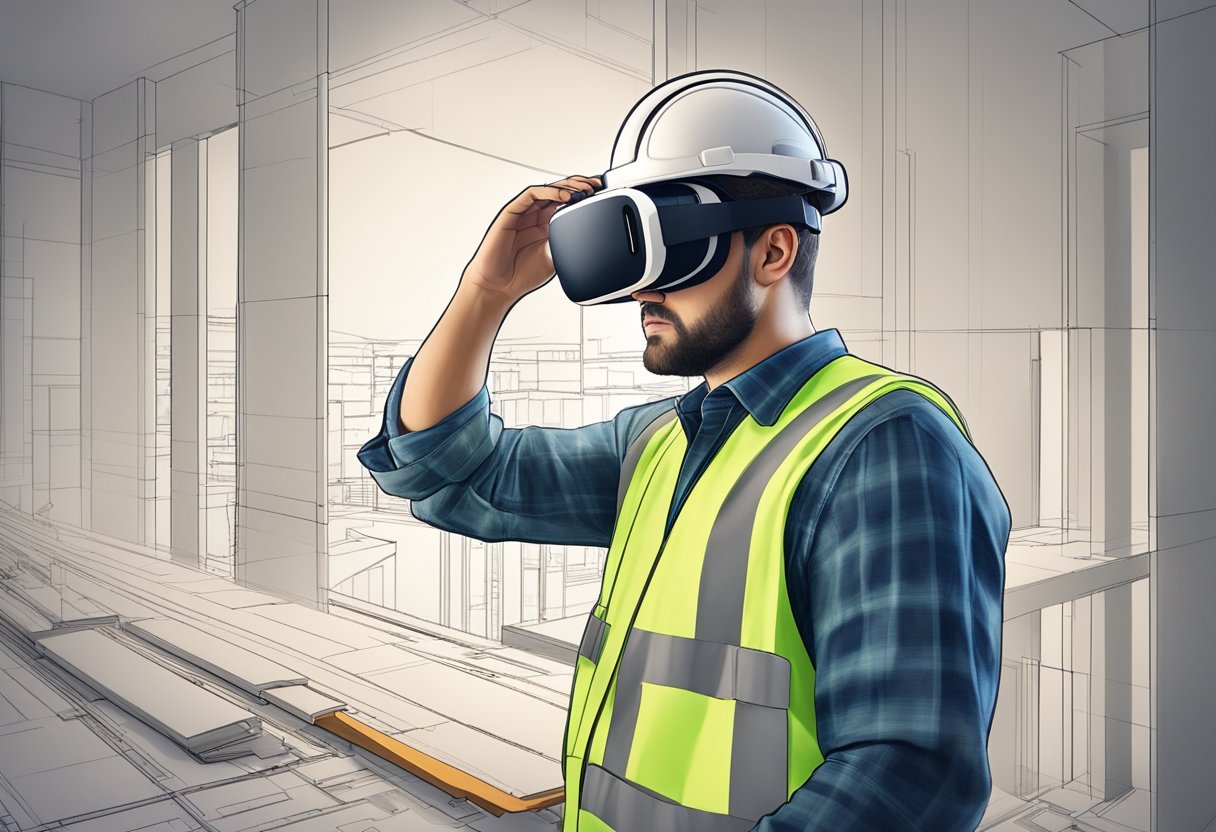Virtual property is a relatively new concept that has emerged with the development of the metaverse and blockchain technology. It refers to digital assets that can be bought, sold, and traded in virtual worlds, such as virtual real estate, virtual goods, and virtual currencies. With the rise of the metaverse, virtual property has become an increasingly popular investment option for individuals and companies alike.
One of the most popular forms of virtual property is virtual real estate, which allows users to buy and own virtual land in the metaverse. Virtual real estate can be used to create virtual businesses, communities, and experiences, and can also be rented out to other users for a profit. Some of the most popular virtual real estate platforms include The Sandbox, Decentraland, and Somnium Space, all of which use blockchain technology to ensure ownership and authenticity of virtual land.
Virtual property represents a new and exciting frontier in the world of investment and finance. As the metaverse continues to grow and expand, it is likely that virtual property will become an increasingly important part of the global economy, offering new opportunities for investors and entrepreneurs alike.
What is virtual property
Virtual property refers to intangible assets that exist in digital spaces such as virtual worlds, metaverse, and other digital platforms. It includes items such as digital land, avatars, virtual currencies, and other digital assets that can be bought, sold, or traded. Virtual property is unique in that it exists only in digital spaces and has no physical presence in the real world.
What is the purpose of virtual property
The purpose of virtual property is to provide users with a sense of ownership and control over their digital assets. Virtual property allows users to invest in digital assets, build virtual businesses, and participate in virtual economies. It also allows users to express themselves creatively by building and customizing their virtual spaces.
Virtual property prices
Virtual property prices vary depending on the platform, the type of asset, and the demand for the asset. Some virtual properties such as digital land can be quite expensive, with prices ranging from a few dollars to thousands of dollars.
Virtual currencies such as Bitcoin and Ethereum are also considered virtual property and their prices are determined by market demand.
How to get virtual property
Virtual property can be acquired through various means such as buying, trading, or earning it through in-game achievements.
Some platforms such as Decentraland, The Sandbox, and Somnium Space allow users to purchase virtual land and other assets using cryptocurrencies such as Ethereum. Other platforms such as Roblox and Second Life allow users to earn virtual currency by participating in the platform’s economy.
Best place to buy virtual property
The best place to buy virtual property depends on the user’s preferences and the type of asset they are interested in. Decentraland, The Sandbox, and Somnium Space are popular platforms for buying virtual land and other assets.
Cryptovoxels is a popular platform for buying and building virtual spaces using voxels. Superworld is a platform that allows users to buy and sell virtual real estate using augmented reality technology. It is important to research each platform and the assets available before making a purchase.
Virtual property is an important aspect of the digital economy, providing users with a sense of ownership and control over their digital assets. With the rise of Web3 and the Metaverse, virtual property is set to become an even more important asset class in the future.
Investment in Digital Assets
Investment in digital assets has become increasingly popular in recent years. The rise of blockchain technology and cryptocurrencies has created a new asset class that includes virtual land, non-fungible tokens (NFTs), and other digital assets. This section will explore some of the ways investors can invest in digital assets.
Investing in Virtual Land
Virtual land is a type of digital asset that has gained popularity in recent years. Platforms such as Decentraland and The Sandbox allow users to buy and sell virtual land using cryptocurrency.
The value of virtual land is determined by its location and the demand for it. Investors can generate income from virtual land in several ways, such as advertising, affiliate marketing, and selling products and services.
NFTs and Ownership
NFTs are unique digital assets that represent ownership of a specific item, such as a piece of art or a collectible. NFTs are stored on a blockchain, which provides a secure and transparent way to verify ownership.
Investors can buy and sell NFTs on marketplaces such as OpenSea.io, NonFungible.com, and Tokens.com. The value of NFTs is determined by their rarity and demand.
Marketplaces and Trading
Investors can buy and sell digital assets on marketplaces such as OpenSea.io, NonFungible.com, and Tokens.com. These marketplaces allow users to trade a variety of digital assets, including virtual land, NFTs, and other digital assets. Investors can build a diversified portfolio of digital assets and trade them on these marketplaces.
Investing in digital assets can provide investors with a new way to diversify their portfolio. Virtual land, NFTs, and other digital assets have the potential to generate income and appreciate in value over time.
However, investors should be aware of the risks associated with investing in digital assets, such as volatility and lack of regulation. It is important to do your research and understand the risks before investing in digital assets.
Economic Aspects of Virtual Property
Scarcity and Value
Just like real estate, virtual property is subject to the laws of supply and demand. The value of virtual property is determined by its scarcity, location, and desirability. Scarcity is created by the limited availability of virtual land and other digital assets. As more people enter the metaverse, demand for virtual property will increase, driving up prices.
Virtual real estate is a relatively new asset class, but it has already attracted significant attention from investors. According to a report by HSBC, the market for virtual real estate could reach $1.5 billion by 2022.
This growth is being driven by the increasing popularity of virtual worlds and blockchain technology, which allows for secure ownership and transfer of virtual assets.
Digital Real Estate Companies
Just like in the real world, there are companies that specialize in buying, selling, and managing virtual real estate. These companies use various strategies to generate revenue, such as renting out virtual space for events, selling advertising space, and offering virtual property management services.
One example of a digital real estate company is Decentraland, which operates a virtual world where users can buy and sell virtual land using cryptocurrency. Another example is The Sandbox, which allows users to create and monetize their own virtual games and experiences.
As the market for virtual real estate continues to grow, it is likely that more companies will enter the space, offering new and innovative ways to invest in and profit from virtual property.
Cultural and Social Impact of Virtual Properties
Virtual property has not only transformed the way people interact with digital content but also has had a significant impact on culture and society as a whole. This section explores the effects of virtual property on culture and society, including influencers and celebrities, commerce and exhibition, and community and social interaction.
Influencers and Celebrities
The rise of virtual property has enabled influencers and celebrities to expand their digital presence. Celebrities such as Snoop Dogg and Paris Hilton have entered the virtual world and have used their influence to promote and sell virtual goods. This has allowed them to reach a wider audience and gain more exposure, ultimately increasing their fan base.
Commerce and Exhibition
Virtual property has opened up new avenues for commerce and exhibition. Digital art has become a popular form of virtual property, with Samsung’s The Frame TV serving as a home base for displaying digital art. Virtual exhibitions have also become more prevalent, with Facebook’s Horizon providing a platform for users to create and showcase their own virtual worlds.
Community and Social Interaction
Virtual property has also had a significant impact on community and social interaction. With the rise of virtual reality, people can interact with each other in a virtual space, creating a sense of community that transcends physical boundaries.
Mark Zuckerberg’s vision for Facebook’s Horizon is to create a space where people can come together and interact in a virtual world, ultimately fostering a sense of community.
Virtual property has had a profound impact on culture and society. From the rise of influencers and celebrities in the virtual world to the new avenues for commerce and exhibition, virtual property has transformed the way people interact with digital content.
The ability to create a sense of community and social interaction in a virtual space has opened up new possibilities for human connection.
Frequently Asked Questions
How do virtual properties in C# differ from traditional properties?
Virtual properties in C# are different from traditional properties in that they do not have a physical existence. They are digital assets that exist within the metaverse and can be bought, sold, and traded like traditional real estate. Virtual properties in C# are created and managed through smart contracts and are secured through blockchain technology.
What are the benefits of investing in virtual real estate?
Investing in virtual real estate can provide numerous benefits, including low entry costs, high potential returns, and the ability to diversify one’s investment portfolio. Virtual real estate can provide a unique opportunity to participate in the emerging field of blockchain technology and the metaverse.
What factors influence the cost of virtual land?
The cost of virtual land is influenced by a variety of factors, including location within the metaverse, the size and type of property, and the demand for virtual real estate. The scarcity of virtual land can drive up prices, as can the level of development and customization of the property.
How can one verify the legitimacy of virtual property transactions?
To verify the legitimacy of virtual property transactions, it is important to research the platform or marketplace where the transaction is taking place.
Look for reviews and feedback from other users, and check to see if the platform has a track record of successful transactions. It is important to verify the identity of the other party in the transaction and to use secure payment methods.
What are the best platforms for purchasing virtual land?
There are a variety of platforms and marketplaces for purchasing virtual land, including Decentraland, Somnium Space, and The Sandbox. Each platform has its own unique features and benefits, and it is important to research and compare different options before making a purchase.
How do virtual property realty agents operate within the metaverse?
Virtual property realty agents operate within the metaverse by helping buyers and sellers navigate the virtual real estate market.
They provide guidance and expertise on buying and selling virtual properties, as well as assistance with property management and development. Virtual property realty agents may also offer marketing and advertising services to help sellers reach potential buyers.




